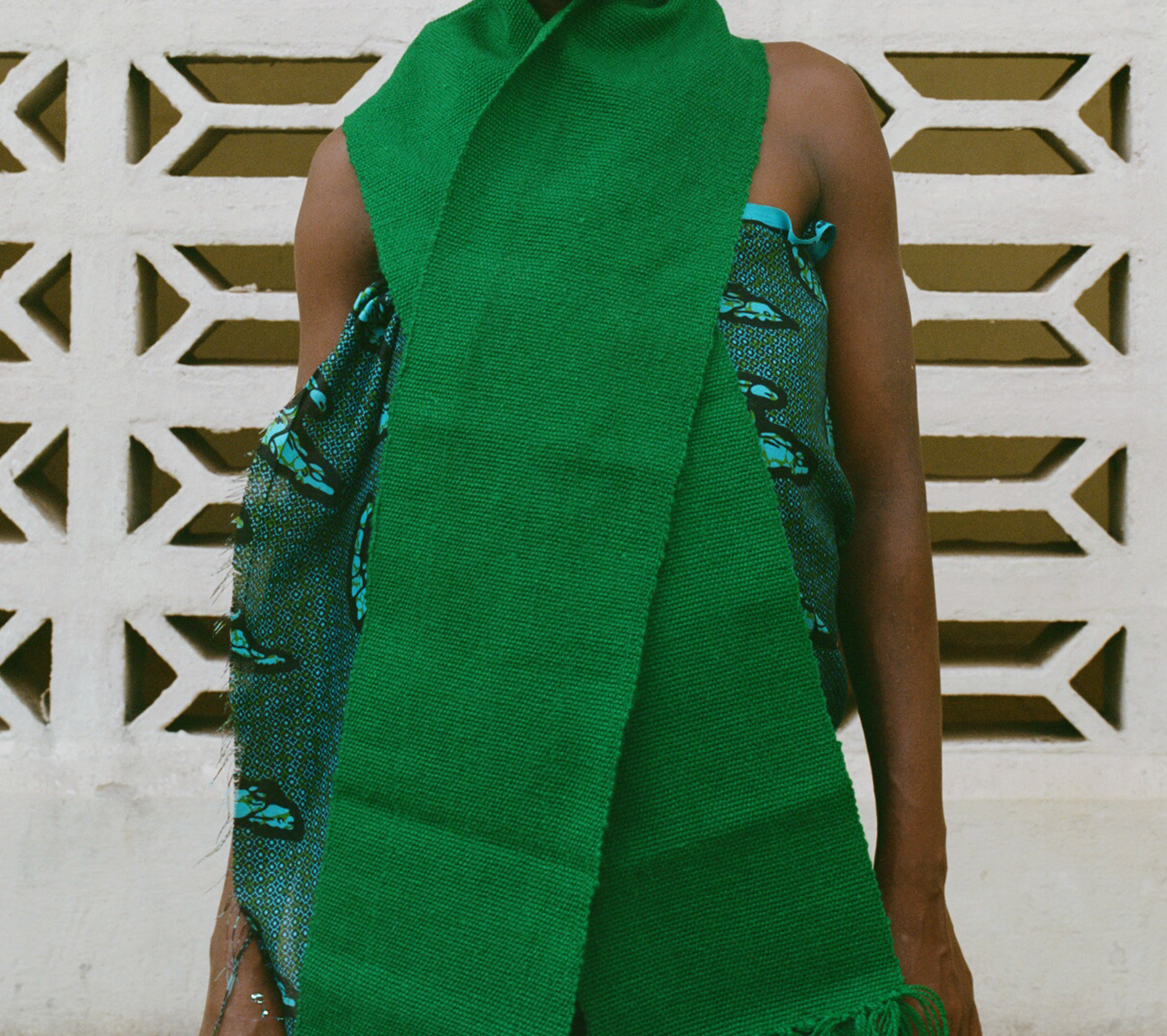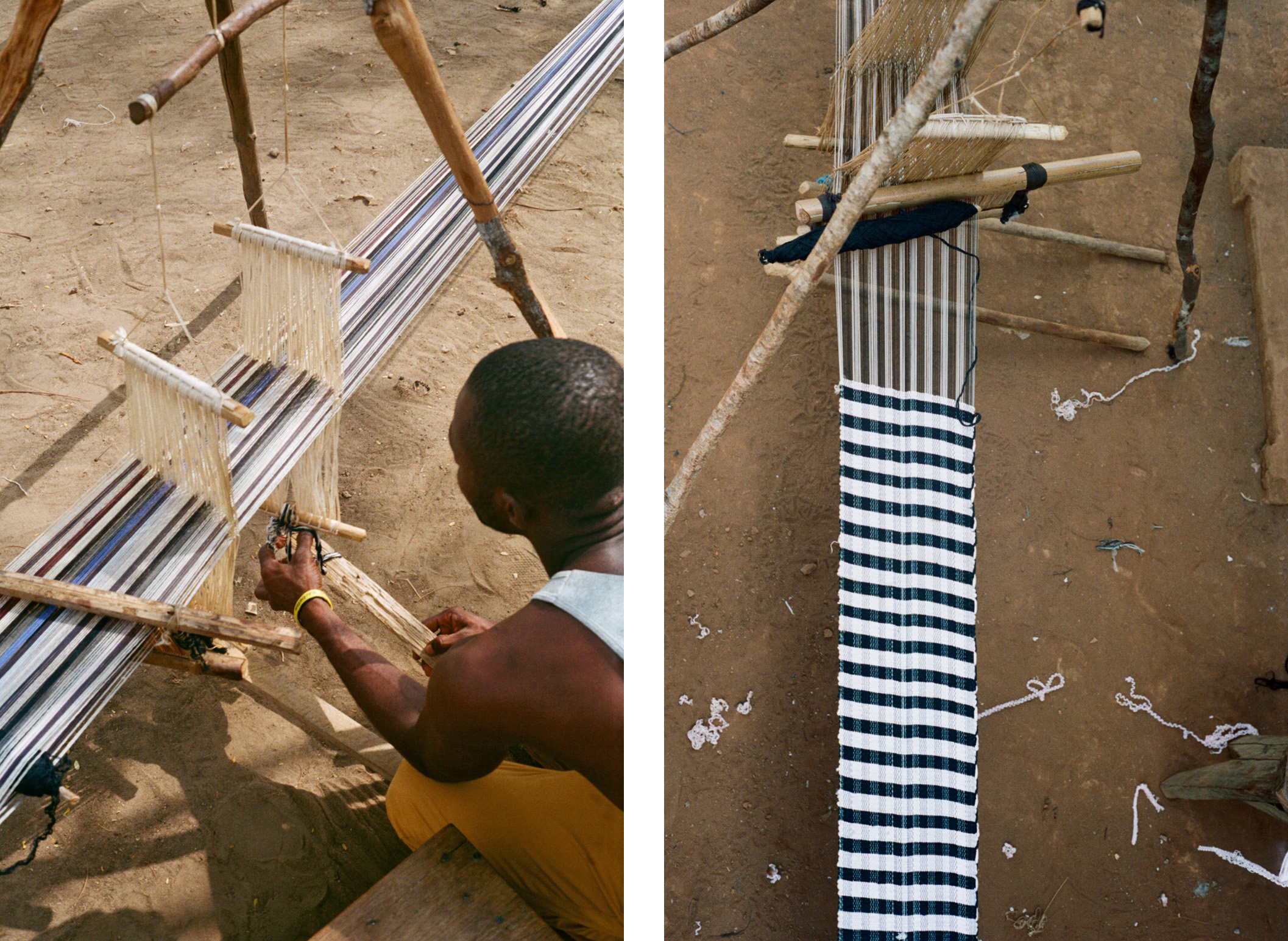weaving in sierra leone
Research and development of traditional weaving in Sierra Leone. Focusing on weaving within the Freetown peninsular and Folu and Segbwema in the Eastern province of Sierra Leone. With support from Arts Council England I spent months learning from Mohammed Yanka, Abu Bakar Sesay and the master weavers of Folu village.
In segbwema I had the opportunity to visit a cotton farm in the village which is harvested by the community and processed into natural yarn which is woven on site. Because domestic cotton is rare, mostly imported yarns are often used today. However because of the cost of imported yarn is high, many weavers now buy bulk used knitted sweaters from markets in the east-end of Freetown. The second hand jumpers are skillfully unravelled by an individual thread and simultaneaously would onto sticks to form a bobbin. The traditional tripod looms are made from local wood, bamboo and fishing thread. This yarn from the recycled sweaters is then woven with the loom to form a long strip of fabric. Intricate patterns can be designed within the weave or inlayed. The work is highly skilled, labor intensive and rewarding. Men and women engage in all levels of the work often taking over from one another, borrowing materials, skills, cracking jokes and eating together.
The six to ten inch wide strips of fabric are then taken to market or sewn together to form a wider cloth used to make traditional ‘country cloth’ clothing. Cheaply manufactured imported fabric and the dumping of global second hand clothing into Sierra Leone and many other West-African countries has undercut the cost of traditional woven fabrics and has therefore greatly damaged the local weaving industry.
Learning this weaving process inspired me to start Carrying Colour, through which I have designed a range of scarfs which are handwoven in Freetown on these traditional looms.






